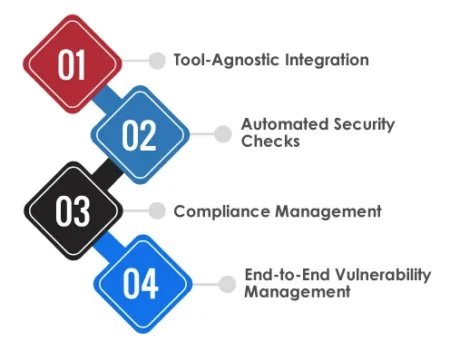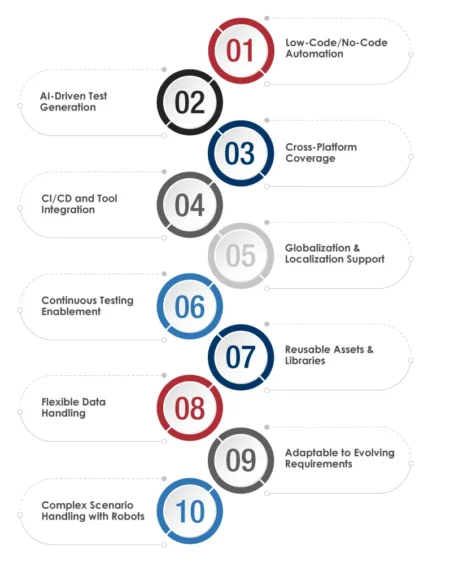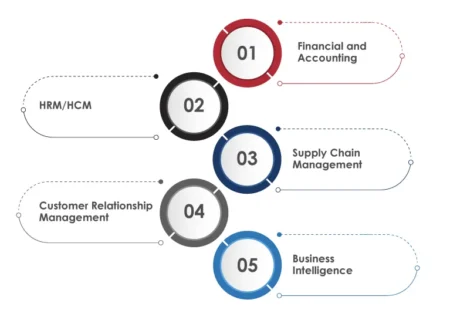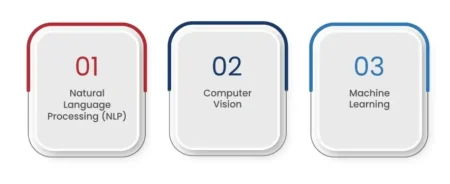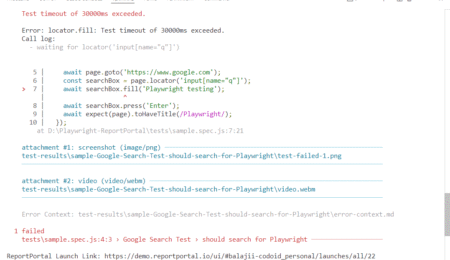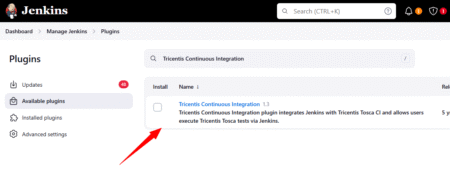The blog discusses how AI transforms data engineering by automating tasks, streamlining pipelines, and enhancing analytics. It boosts data quality, speeds up insights, and supports smarter decision-making. By minimizing manual intervention and improving system reliability, autonomous systems empower data teams to focus on innovation while handling growing data demands in real-time, high-volume environments.
The post Engineering Smarter Data Pipelines with Autonomous AI first appeared on TestingXperts.
Software Engineering
API testing is crucial for ensuring that your backend services work correctly and reliably. APIs often serve as the backbone of web and mobile applications, so catching bugs early through automated tests can save time and prevent costly issues in production. For Node.js developers and testers, the Supertest API library offers a powerful yet simple
The post Supertest: The Ultimate Guide to Testing Node.js APIs appeared first on Codoid.
Playwright Visual Testing is an automated approach to verify that your web application’s UI looks correct and remains consistent after code changes. In modern web development, how your app looks is just as crucial as how it works. Visual bugs like broken layouts, overlapping elements, or wrong colors can slip through functional tests. This is
The post Playwright Visual Testing: A Comprehensive Guide to UI Regression appeared first on Codoid.
What is Tx-Insights? Why do Enterprises Struggle with CI/CD Visibility? Key Features and Functionalities of Tx-Insights Business Benefits of Leveraging Tx-Insights Summary In the current technology scenario, where almost everything is AI-integrated, quality control is becoming one of the main forces behind the success of software products. Tracking software development and testing status drastically improves … Turn Siloed Metrics into Business-Driven Insights with Tx-Insights
The post Turn Siloed Metrics into Business-Driven Insights with Tx-Insights first appeared on TestingXperts.
Web applications are now at the core of business operations, from e-commerce and banking to healthcare and SaaS platforms. As industries increasingly rely on web apps to deliver value and engage users, the security stakes have never been higher. Cyberattacks targeting these applications are on the rise, often exploiting well-known and preventable vulnerabilities. The consequences
The post OWASP Top 10 Vulnerabilities: A Guide for QA Testers appeared first on Codoid.
The blog discusses Tx-DevSecOps, Txs’ innovative accelerator designed to embed security seamlessly within DevOps processes. It bridges the gap between speed and security in modern DevOps environments. It also offers automated testing and compliance-ready pipelines, enabling teams to release secure, high-quality software quickly and confidently.
The post Tx-DevSecOps – Bridging the Gap Between Security and Speed in DevOps first appeared on TestingXperts.
This blog will discuss NG-TxHyperAutomate, Txs’ low-code test automation framework that helps businesses accelerate their software testing efforts. It will also outline how companies benefit from NG-TxHyperAutomate and demonstrate its value in speeding up release cycles, improving software quality, and optimizing costs.
The post Unlock Seamless Test Automation and Drive Quality with NG-TxHyperAutomate first appeared on TestingXperts.
I’m setting up test automation on a .net project with both a desktop (Windows) and web application. Are looking into different free solutions to do it, and I have two questions.
Would it be possible to combine FlaUI and Selenium? And would it be possible to combine both the testing of desktop and web in the same script?
As engineering teams scale and AI adoption accelerates, MLOps vs DevOps have emerged as foundational practices for delivering robust software and machine learning solutions efficiently. While DevOps has long served as the cornerstone of streamlined software development and deployment, MLOps is rapidly gaining momentum as organizations operationalize machine learning models at scale. Both aim to
The post MLOps vs DevOps: Unifying AI and Software Development appeared first on Codoid.
This blog will discuss NG-TxAutomate, Tx’s innovative, AI-powered test automation accelerator designed for today’s fast-paced digital environments. It also explores why businesses need an automation framework and the key features and challenges that NG-TxAutomate helps address.
The post From Weeks to Days – How NG-TxAutomate Shrinks Automation Timelines first appeared on TestingXperts.
Table of Contents Understanding a Cloud ERP Solution On-Premises ERP vs Cloud-based ERP Solution Cloud ERP Software Solution Components 5 Types of Cloud ERP Software Why Does Your Business Need a Cloud-based ERP Solution? How can Tx help ensure the Quality of Your Cloud ERP Solution? Summary Today’s businesses want to scale and expand their … Scaling Smarter with Cloud ERP Solution – Driving Business Growth
The post Scaling Smarter with Cloud ERP Solution – Driving Business Growth first appeared on TestingXperts.
As digital products become essential to daily life, accessibility is more critical than ever. Accessibility testing ensures that websites and applications are usable by everyone, including people with vision, hearing, motor, or cognitive impairments. While manual accessibility reviews are important, relying solely on them is inefficient for modern development cycles. This is where automated accessibility
The post Automated Accessibility Testing with Puppeteer appeared first on Codoid.
The blog discusses how AI is upscaling quality assurance through autonomous testing, where systems independently create, run, and maintain test cases. This approach reduces manual work, boosts accuracy, and adapts to changes in real-time.
The post Role of AI-driven Autonomous Testing in Software QA first appeared on TestingXperts.
Test automation frameworks like Playwright have revolutionized automation testing for browser-based applications with their speed,, reliability, and cross-browser support. However, while Playwright excels at test execution, its default reporting capabilities can leave teams wanting more when it comes to actionable insights and collaboration. Enter ReportPortal, a powerful, open-source test reporting platform designed to transform raw
The post Playwright Report Portal Integration Guide appeared first on Codoid.
The blog explores how the EU AI Act regulates general-purpose AI (GPAI) models, especially those posing systemic risks due to their scale, reach, and potential for misuse. It outlines how such models are identified, what legal obligations providers must meet, and how the AI Office enforces compliance.
The post How General-Purpose AI (GPAI) Models Are Regulated first appeared on TestingXperts.
Picture this: you describe your dream app in plain English, and within minutes, it’s a working product no coding, no setup, just your vision brought to life. This is Vibe Coding, the AI powered revolution redefining software development in 2025. By turning natural language prompts into fully functional applications, Vibe Coding empowers developers, designers, and
The post Vibe Coding: Transform Your Coding Experience appeared first on Codoid.
Understanding AI Agents’ Role in Insurance How Does Rigorous Software Testing Help Avoid Such Issues? Use Cases of AI Agents in Insurance Key Benefits of AI Agents in Insurance How can Tx Help You Improve Your AI Agents Quality? Summary In the rapidly evolving insurance ecosystem, balancing regulatory changes with dynamic customer needs is one … Top 5 Use Cases for AI Agents in the Insurance Industry
The post Top 5 Use Cases for AI Agents in the Insurance Industry first appeared on TestingXperts.
Integrating Jenkins with Tricentis Tosca is a practical step for teams looking to bring more automation testing and consistency into their CI/CD pipelines. This setup allows you to execute Tosca test cases automatically from Jenkins, helping ensure smoother, more reliable test cycles with less manual intervention. In this blog, we’ll guide you through the process
The post Tosca Jenkins Integration: Boost Your CI/CD Workflow Today appeared first on Codoid.
Data Validation Testing in ETL Data Validation Vs. Data Quality Data Validation Testing Stages in ETL Data Validation Challenges and Solutions Why Choose Tx for Data Validation Testing Services? Summary In today’s tech-centric world, everything depends upon data quality. Businesses rely heavily on accurate, consistent, and timely data to drive insights and facilitate decision-making. Large … Why Data Validation Testing Is Essential for ETL Success
The post Why Data Validation Testing Is Essential for ETL Success first appeared on TestingXperts.
I’m working on performance testing a multi-tenant application using Apache JMeter. I want to simulate load coming from three different clients, where each client’s data is stored in a separate CSV file. The load should be distributed like this:
Client 1: 60%
Client 2: 30%
Client 3: 10%
All CSV files have the same structure (columns), but contain different data per client.
My Goal:
I want each thread to randomly and proportionally pick data from the appropriate CSV file based on the percentages above and use it in the HTTP requests without data overlap or inconsistency.
What I Tried:
Approach 1: Dynamically set file path using a variable
My Jmeter Test Plan structure is,
Test Plan
|– User Defined Variables
|– CSV Data Set Config
|– Stepping Thread Group
|– |– JSR223 PreProcessor
|– |– HTTP Request Sampler 1
|– |– HTTP Request Sampler 2
|– |– HTTP Request Sampler n
|– View Result Tree
|– Summary Report
In the Test Plan, I have a variable path defined in User Defined Variables as:
path = D:/jmeter/project
I then set the Filename in CSV Data Set Config to ${csvFile}.
Inside a JSR223 PreProcessor, I tried setting the csvFile variable like this:
def randomValue = Math.random()
if (randomValue < 0.6) {
vars.put(‘csvFile’, “${path}/file1.csv”)
} else if (randomValue < 0.9) {
vars.put(‘csvFile’, “${path}/file2.csv”)
} else {
vars.put(‘csvFile’, “${path}/file3.csv”)
}
The issue is, even though csvFile gets set correctly in the JSR223 PreProcessor, the CSV Data Set Config doesn’t pick up the value dynamically.
Approach 2: Dynamically set file path using a variable and place the CSV Data Set Config after the JSR223 PreProcessor
My Jmeter Test Plan structure is,
Test Plan
|– User Defined Variables
|– Stepping Thread Group
|– |– JSR223 PreProcessor
|– |– CSV Data Set Config
|– |– HTTP Request Sampler 1
|– |– HTTP Request Sampler 2
|– |– HTTP Request Sampler n
|– View Result Tree
|– Summary Report
Still the result is the same as in Approach 1.
I suspect it’s due to the execution order, as JMeter processes the CSV Data Set Config before the PreProcessor runs.
My Question:
What is the correct way in JMeter to:
Dynamically and proportionally distribute threads across multiple CSV files
Ensure clean separation of data per thread (no variable conflicts)
Avoid data overlap or race conditions between threads
Note: I cannot share actual screenshots or project files due to employer restrictions, but I’m looking for a JMeter-safe and scalable way to simulate this kind of weighted load across clients using separate CSV files or anything other suggestion for tackling this issue.
Any ideas or recommendations for managing this effectively?




